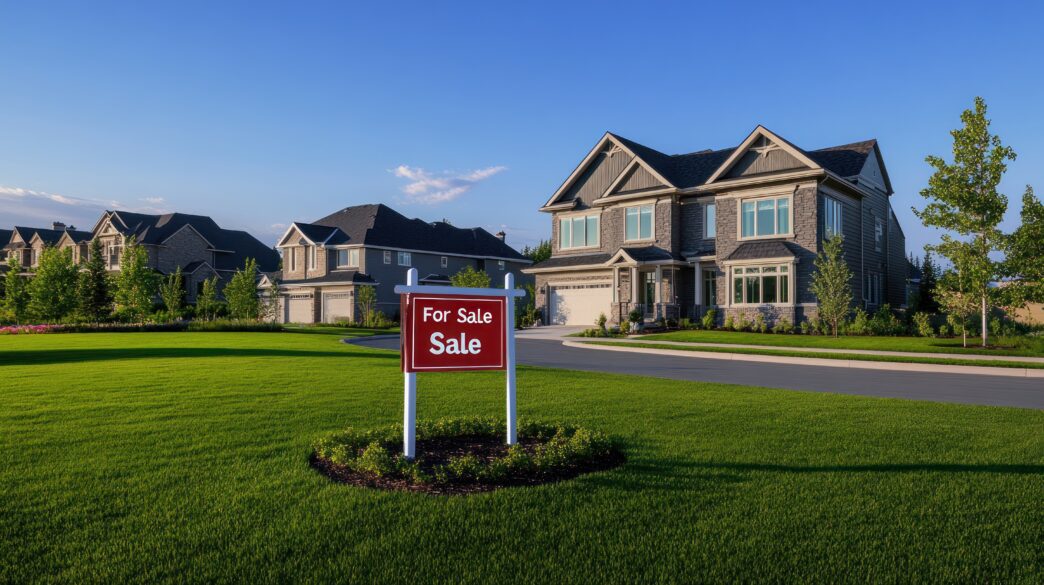Executive Summary
- President Trump proposed 50-year mortgage loans as a strategy to address home affordability by significantly lowering monthly payments.
- Housing experts warn that while monthly payments would decrease slightly, a 50-year mortgage could nearly double the total interest paid over the loan’s lifetime and potentially inflate housing prices.
- Implementing 50-year mortgages would require significant legislative changes, specifically to the Dodd-Frank Act, and raises concerns about slower equity accumulation and increased financial risk for borrowers.
The Story So Far
- President Donald Trump’s proposal for 50-year mortgage loans is a direct effort to address the growing challenge of home affordability in the United States, where high prices and mortgage rates have made homeownership increasingly difficult, pushing the average age of first-time buyers to a record 40. While the administration aims to lower monthly payments and increase access to homes, the plan faces significant concerns from experts about substantially higher long-term costs for borrowers, potential inflation in housing prices, and the need for major legislative changes to overcome current loan term limits set by the Dodd-Frank Act.
Why This Matters
- President Trump’s proposal for 50-year mortgages, while aiming to reduce monthly payments and expand homeownership, faces significant expert criticism for potentially doubling the total interest paid over a home’s lifetime and inadvertently driving up housing prices by increasing demand without addressing supply, all while requiring substantial legislative changes to current loan term limits.
Who Thinks What?
- President Donald Trump’s administration and supporters propose 50-year mortgage loans as a “game changer” to significantly lower monthly payments, making homeownership more accessible for middle-income Americans currently priced out of the market.
- Housing experts, such as Richard Green, caution that 50-year mortgages are “not a good idea” because they would substantially increase total interest payments over the loan’s lifetime, slow principal paydown, and could inadvertently drive up housing prices by boosting demand without increasing supply.
- Some industry professionals, like Phil Crescenzo, suggest that while equity accumulation would be slower, a 50-year mortgage could serve as a valuable “starting point” for individuals who otherwise cannot afford to buy, allowing them to enter the market with the option to refinance later.
President Donald Trump has recently proposed the introduction of 50-year mortgage loans as a strategy to address home affordability in the United States. While administration officials suggest the extended loan terms could significantly lower monthly payments, making homeownership more accessible, many housing experts caution that the plan could substantially increase the total cost of a home over its lifetime and potentially drive up housing prices.
Proposal Details and Rationale
The proposal, which is currently light on specific details, was championed by Federal Housing Finance Agency Director Bill Pulte, who called it a “complete game changer.” Kevin Hassett, director of Trump’s National Economic Council, stated that a 50-year mortgage could reduce typical monthly payments for middle-income Americans by “a few hundred dollars.” The aim is to help more individuals currently priced out of the housing market.
Expert Concerns and Financial Implications
Despite the administration’s claims, numerous housing experts have expressed strong reservations. Richard Green, a professor of finance and business economics at the University of Southern California’s Marshall School of Business, characterized the idea as “not a good idea.” He highlighted that while monthly payment savings would be minimal, borrowers would face a significantly longer period to pay down their principal, increasing their financial risk.
A key concern is the potential for total interest payments to skyrocket. For example, a $450,000 home with a 30-year fixed mortgage at a 6.25% interest rate would incur approximately $547,000 in total interest. Under a 50-year loan at the same rate, the monthly payment would drop slightly from $2,771 to $2,452, but the total interest paid would balloon to an estimated $1.02 million, an 87% increase.
Market Dynamics and Legal Hurdles
Experts also warn that extending loan terms without increasing housing supply could inadvertently push home prices higher by boosting demand. Richard Green emphasized that building more homes in desirable areas remains the most effective way to improve affordability. Furthermore, it is uncertain whether 50-year mortgages would carry the same interest rates as 30-year loans, with lenders potentially charging higher rates due to the increased risk of default over a longer period.
Legally, the Dodd-Frank Act, enacted after the 2008 housing crisis, currently limits loan terms to 30 years. Implementing a 50-year mortgage option would therefore necessitate significant legislative changes. The White House has not yet provided details on any specific legislative plans, stating only that President Trump is “always exploring new ways to improve housing affordability.”
A Foot in the Door for Homeownership?
The proposal comes as the average age of first-time homebuyers has reached a record high of 40, largely due to elevated home prices and mortgage rates. While a 50-year loan could mean some buyers are still paying off their homes into their 90s, some industry professionals offer a more nuanced view.
Phil Crescenzo, a vice president at Nation One Mortgage Corporation, suggested that while equity accumulation would be slower, a 50-year mortgage could still be preferable to renting for those unable to enter the market otherwise. Crescenzo noted that such a loan could serve as a “starting point,” with homeowners retaining the option to refinance later as their financial situation improves.
Key Takeaways
President Trump’s proposal for 50-year mortgages aims to alleviate the burden of high monthly payments and increase access to homeownership. However, the plan faces considerable criticism from housing experts who foresee significantly higher long-term costs for borrowers, potential inflation in home prices, and substantial legal and regulatory challenges.







